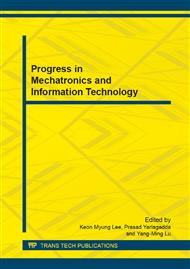p.137
p.141
p.150
p.155
p.159
p.167
p.171
p.175
p.182
Anti-Jamming Performance Simulation of PN-LFM Combined Ranging System
Abstract:
The pseudo-random binary-phase code phase modulation and linear frequency modulation (PN-LFM) combined ranging system is a new detection system, which has proven to be powerful capacity in range resolution, velocity resolution and maximum range measurable without ambiguity. In this paper, we study the anti-jamming performance of the new ranging system, especially in the fractal stochastic noise environments. We analyze the impact mechanism of fractal noise on the PN-LFM detection system, and simulate the output of correlating detection. The cross correlation function, power spectrum function and average power of pseudo random signal and fractal noise are deduced, compared with the impact of white noise on the pseudo code detection system. Simulation shows that PN-LFM combined ranging system possess powerful anti-jamming capacity, and performs better in the fractal noise environment than Pseudo random code phase modulation system.
Info:
Periodical:
Pages:
159-164
Citation:
Online since:
November 2013
Authors:
Keywords:
Price:
Сopyright:
© 2014 Trans Tech Publications Ltd. All Rights Reserved
Share:
Citation:


